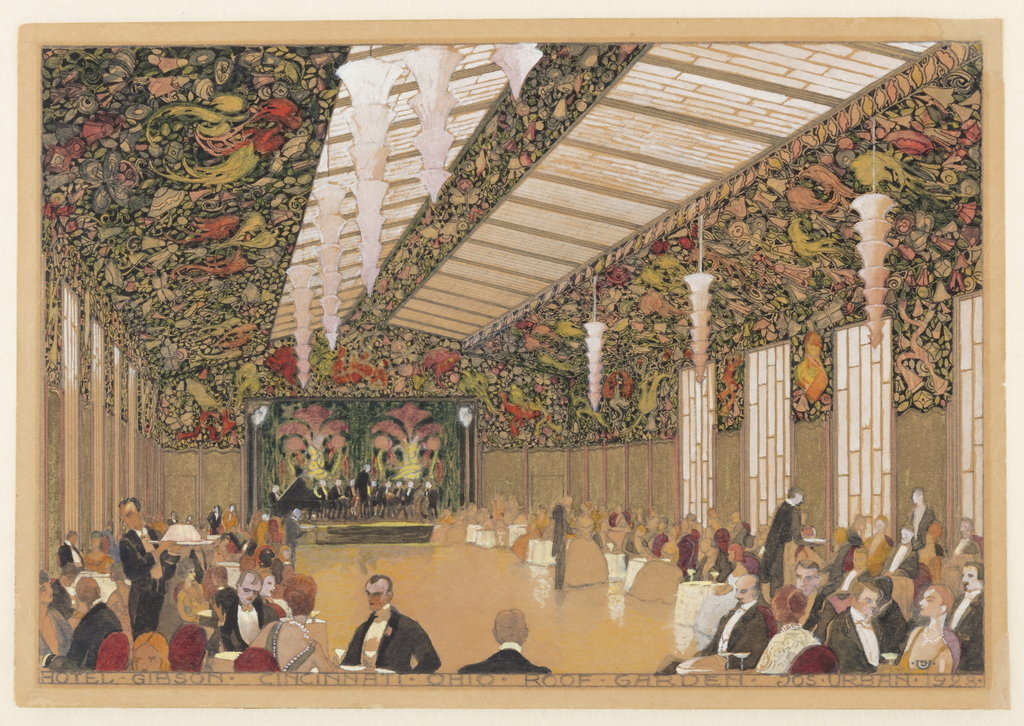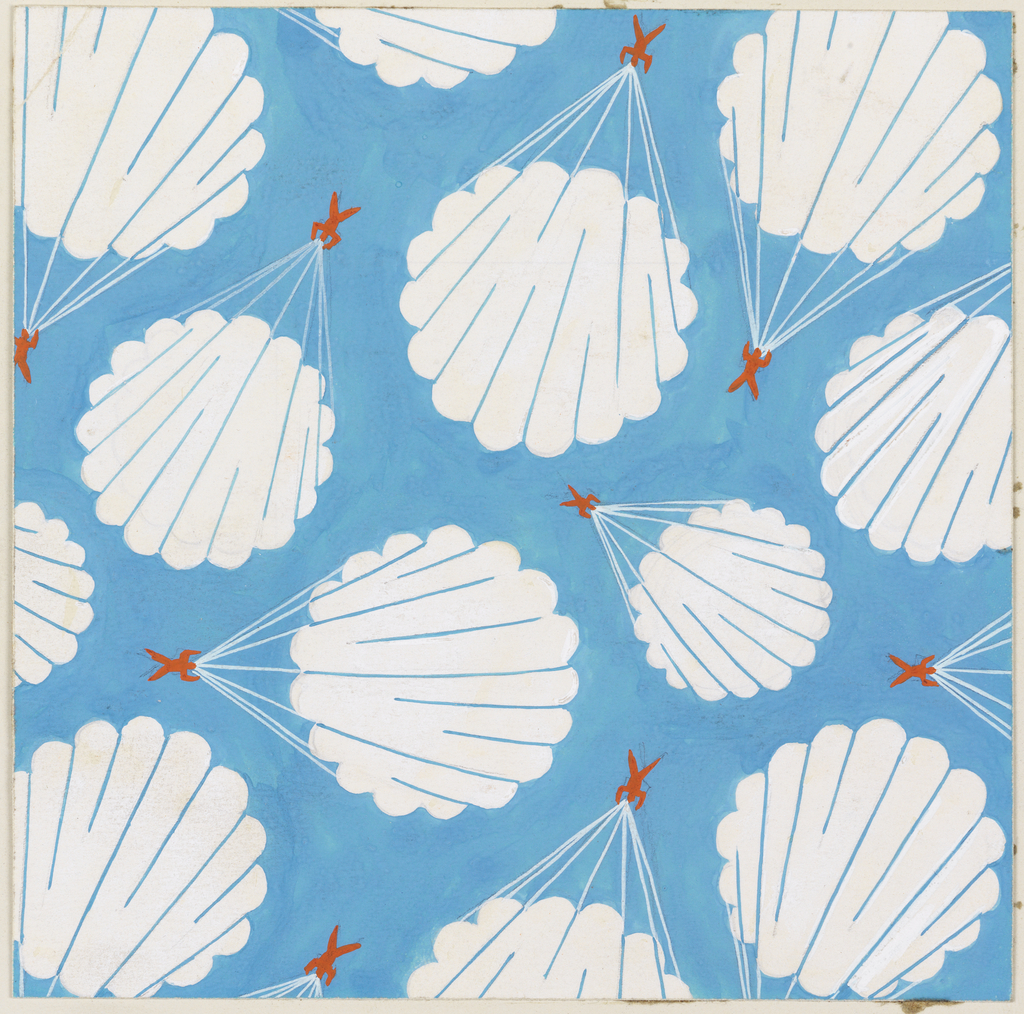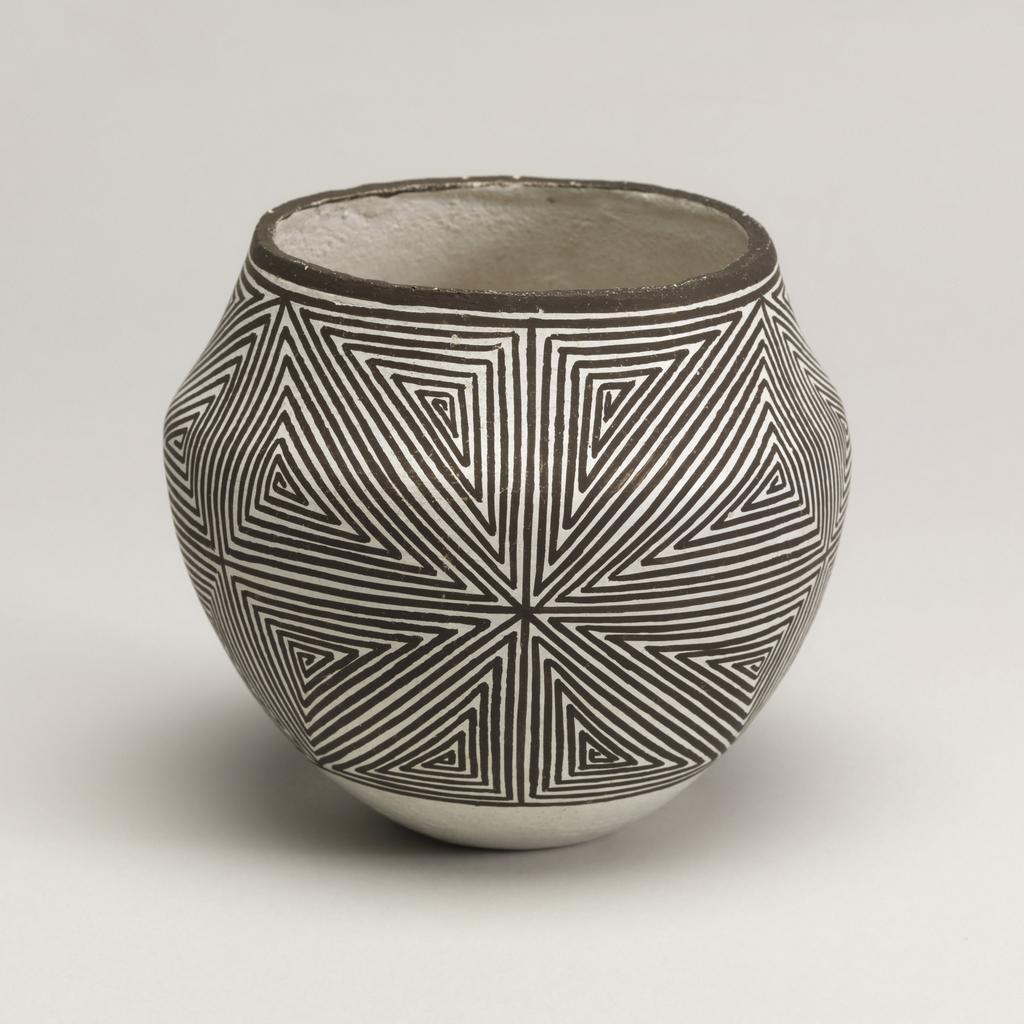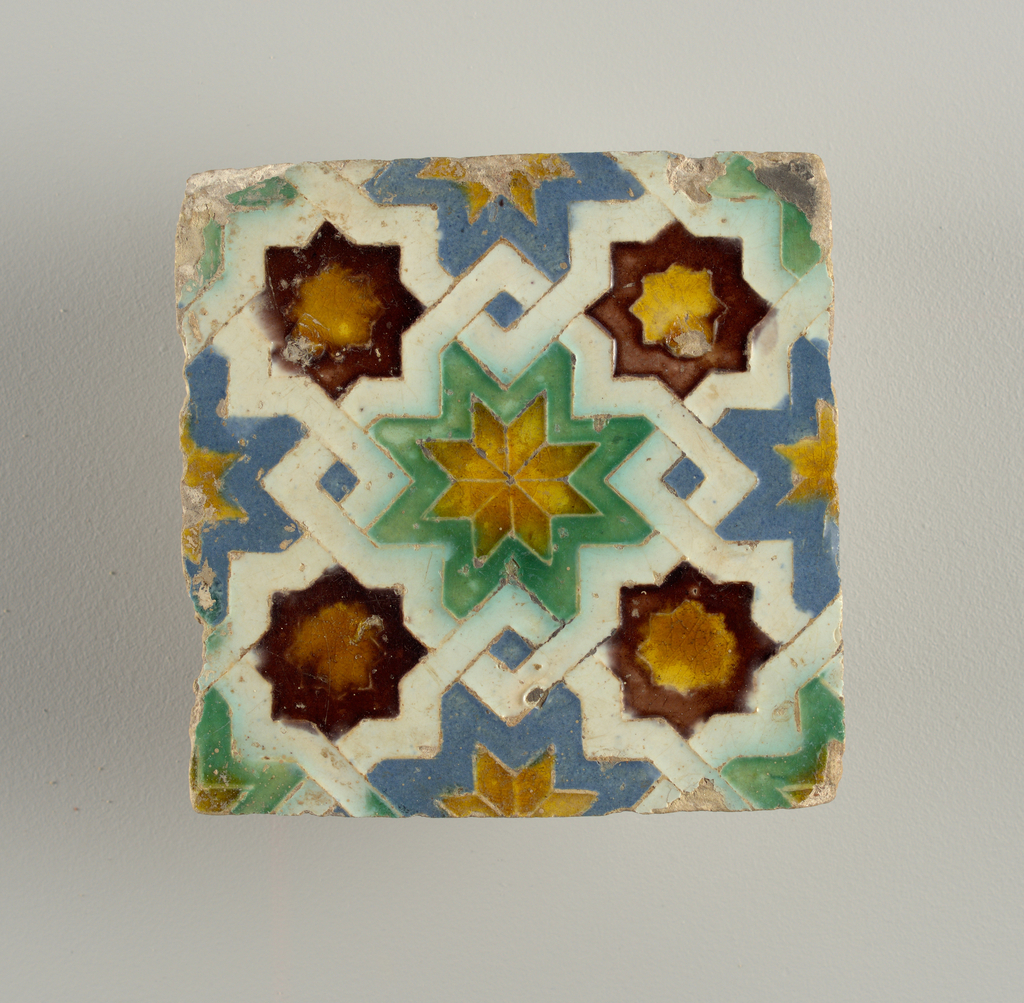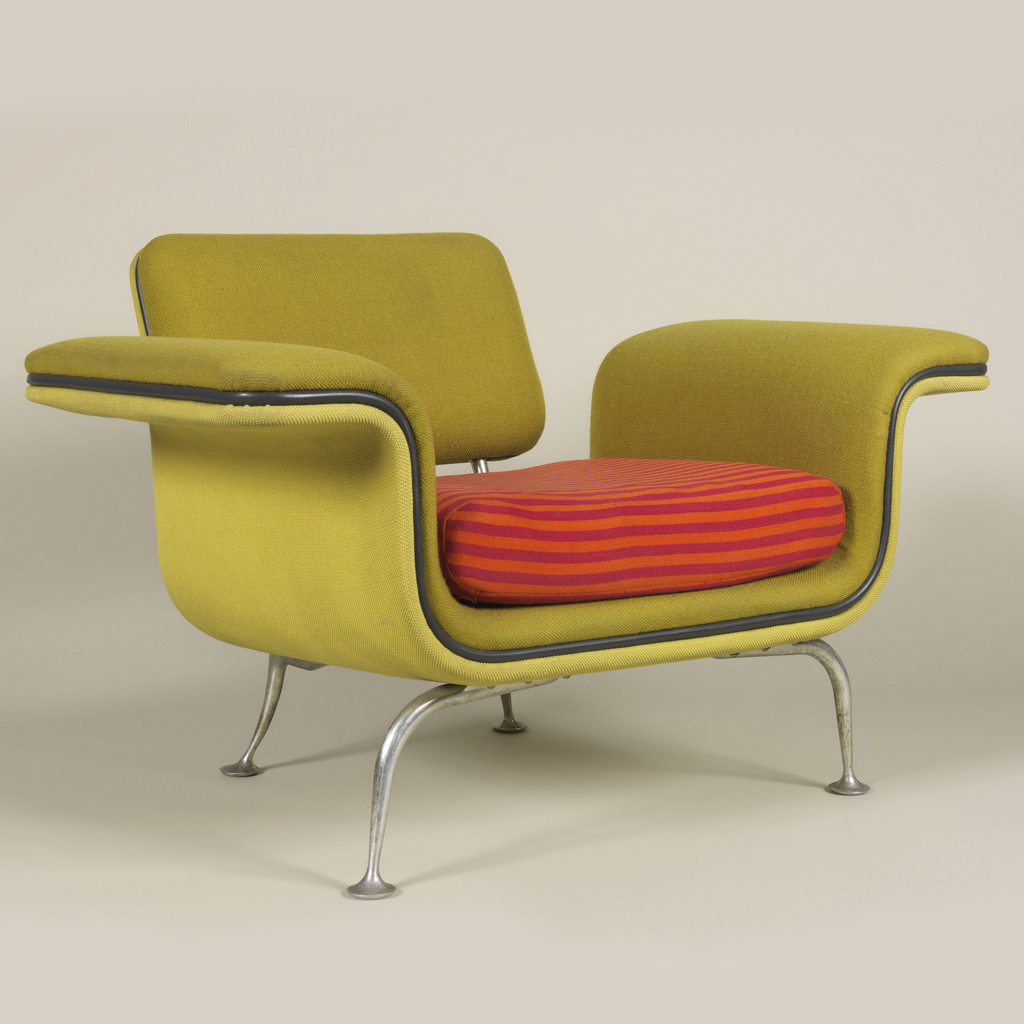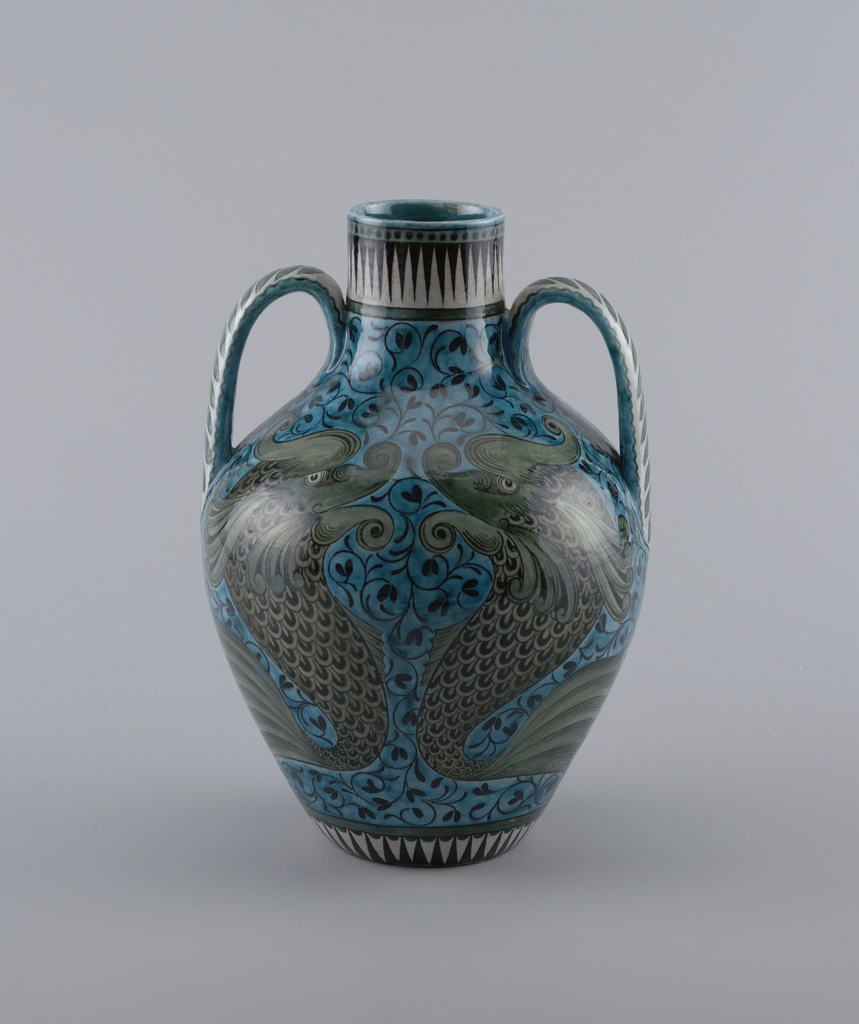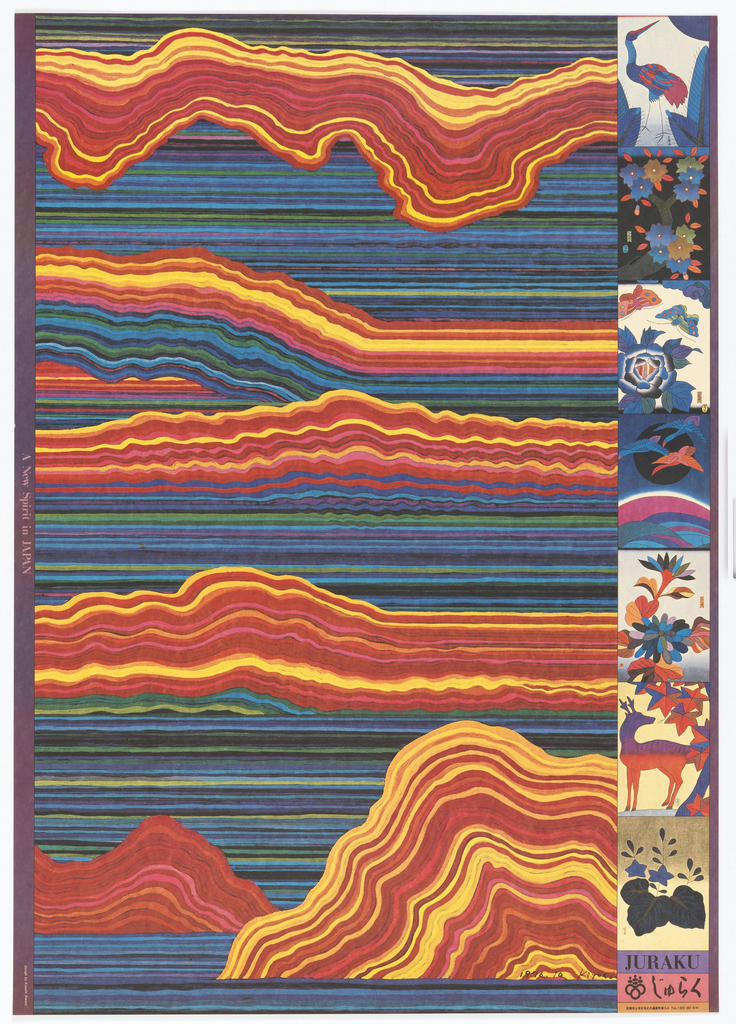Now on view in The Jazz Age: American Style in the 1920s, Joseph Urban's design for a roof garden reflects turn-of-the-century summer dining at its finest.
LIFE magazine deemed him as a “dressmaker in silver” in 1939, but Tommi Parzinger was an incredibly versatile designer, celebrated for his furniture, wallpaper, packaging and textiles.[1] Parzinger designed furnishings for socialites, decorators, and celebrities like Marilyn Monroe and the Rockefellers and he established himself as a man about town in the glamorous circles of...
Lucy Martin Lewis learned to make pottery from her great-Aunt and other women living in Sky City, a remote three hundred foot high sandstone mesa in Acoma Pueblo, New Mexico. Until the middle of the twentieth century, the community had no plumbing and pottery jars were necessary for hauling essentials to the waterless mesa. Pottery...
Bonad or bonader is a type of folk art once produced in large amounts in southern Sweden in the regions of Dalarna and Småland. At first bonad were paintings on textiles meant to imitate tapestries and the wall hangings of the elite, but in the late 18th century they were produced increasingly as paintings on...
This paper features a delightful cast of characters. Various street salesmen, framed as if on postcards or playing cards, sell goods as varied as lavender, sassafras, and cod liver oil. In between them Neo-Rococo frames surround names of further goods such as “Tobacco”, “Sugar”, and “Tonic.” Though this paper is from the 1950s, one could...
Likely dating from the early to mid sixteenth century, this tile illustrates Spain’s rich multicultural design history. Spain’s remarkable decorative pottery tradition originated during the eighth century when the country was conquered by the Moorish Muslim troops of North Africa as part of the expansion of the Umayyad Caliphate. This sixteenth-century tile shows how influential...
Alexander Girard was one of the most prolific interior architects of the twentieth century, one who expressed his enthusiasm for design through his vibrant use of color. Believing that modernism did not equate with the use of drab colors, he incorporated bright hues and bold geometric patterns into his designs. He developed an exciting fabric line for...
William De Morgan’s ceramic decoration was often inspired by the medieval world, similar to the practice of his dear friends William Morris and Edward Burne-Jones. De Morgan’s vases and tiles were frequently adorned with fantastical animals, beasts, and grotesques. On this vase, two stylized fish recall the designs found in illuminated manuscripts. Their bodies gently...
When it comes to Japanese graphic design, a certain set of visual elements are conjured in one’s mind. Simplified forms; a minimal color palette, the generous use of negative space; an effective use of black; and unique lettering, are all characteristic elements that draw on the aesthetics of Zen culture, Japanese Buddhism, calligraphy, ukiyo-e woodblock...
